Dinosaurs Life Size
By Darren Naish
Publication Date: 2010
Barrons Educational Series, Inc. ISBN: 978-0-7641-6378-4.
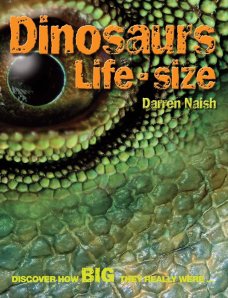 Author: Darren Naish is a well respected paleontologist publishing on all manner of dinosaurs, marine reptiles, pterosaurs, and other extinct animals. While he has published several notable scientific papers, he has also written extensively for the general public, ranging from children’s books to books for the educated layperson. In addition to this book, Naish published Dinosaur Record Breakers, another good book that kids will find interesting. He has also published on cryptozoology, the mostly pseudoscience study of “hidden” creatures, such as Bigfoot and the Loch Ness monster, debunking a variety of mythical creatures and discussing more plausible alternatives. You can also always find him at his highly regarded and widely read blog, Tetrapod Zoology, on the American Scientific blog network.
Author: Darren Naish is a well respected paleontologist publishing on all manner of dinosaurs, marine reptiles, pterosaurs, and other extinct animals. While he has published several notable scientific papers, he has also written extensively for the general public, ranging from children’s books to books for the educated layperson. In addition to this book, Naish published Dinosaur Record Breakers, another good book that kids will find interesting. He has also published on cryptozoology, the mostly pseudoscience study of “hidden” creatures, such as Bigfoot and the Loch Ness monster, debunking a variety of mythical creatures and discussing more plausible alternatives. You can also always find him at his highly regarded and widely read blog, Tetrapod Zoology, on the American Scientific blog network.
Dinosaurs Life Size came out a few years ago, but it is still a decent book for kids. I can’t say good for reasons discussed below, but it is better than many and has mostly good information. Don’t get it confused with the book of the same name by David Bergen, which came out in 2004. Naish’s book is much more up-to-date and scientifically accurate, having the advantage of having been written by an active researcher in the field who knows what he’s talking about. Not to criticize Bergen’s book as I haven’t read it, but if you were going to choose a book that was a decade old written by a non-expert or a book a few years old written by an expert who also happened to be a professional writer, which would you choose?
The book begins with a short introduction to dinosaurs and the book. A fold-out timeline follows, which puts all the animals discussed in the book in its appropriate place in time. The timeline includes a brief description of each period within the Mesozoic Era, commonly known as the Age of Dinosaurs. The meat of the book is a generally two page description of 26 different animals. Each animal gets a brief discussion of what it looked like, where it lived, and a few interesting factoids that have been pulled “from the bones” as a section for each animal is called.
Of course, the main draw of the book are the size comparisons. These are handled in two ways. Each animal is illustrated in full view alongside a young kid for scale. Almost all of them also have a drawing of a body part in real size, which really puts into glaring contrast just how big (and tiny) some of these animals were. Herrerosaurus has a hand, Lesothosaurus has its head for scale. At the extreme ends, Sauroposiedon has an eye and Argentinosaurus has a toe while Microraptor and Archaeopteryx are small enough to be drawn in their full glory. Most are covered in two facing pages, so that every turn of the page presents a new animal. A few are presented on fold-out pages, although I am unclear as to why because only one actually takes advantage of the extra space to present its animal. the other one just puts two animals instead of the standard one.
After the animal descriptions is a fold-out page with a dinosaur quiz to test the reader on what they learned. this is followed by a short discussion of what fossils are, how they are formed, how old they can be, how they are found, and a couple of famous fossil examples. The book ends with a glossary and index. All told, there is plenty of solid information for the young reader who will gaze in wonder at the dinosaurs and at least some will enjoy testing themselves on the quiz.
The book has good information. I particularly like the pictures of a globe marking where each one is found. The illustrations of the life size bits give a good indication of the actual size of the animal. I like the pictures of real fossils and the bits of information about what has been found through their study. The book is very visual and should appeal to kids. The book is listed as being most appropriate for kids in grades 2-6, which I think is a pretty fair assessment. Advanced readers in first and second grade will like it, but will be bored by it by the time they get out of elementary school, but most kids in the 3-5 grades will like the book.
I do, unfortunately have some serious complaints about the book. First and foremost, the book is called “Dinosaurs Life Size”. I would prefer books labeled as such stick with dinosaurs. Despite knowing better, Naish chose to include descriptions of Plesiosaurus, Stenopterygius, Liopleurodon, Pterodactylus, and Quetzalcoatlus; none of which happen to be dinosaurs. You may notice that this leaves only 21 actual dinosaurs. A better title would have been Mesozoic Reptiles Life Size, but I can understand that probably wouldn’t sell as well. Still, it is misleading. What I cannot forgive though, is that he does NOT clearly identify them as non-dinosaurs. This is such an unforgivable sin that I am tempted to tell people not to get this book. The only place he indicates they are not dinosaurs is ONE sentence in the introduction. Naish has published research on all of these animals, he certainly knows better, so this is unpardonable.
The next complaint I have is in the illustrations themselves. Some of the dinosaurs are noticeably absent of feathers. The Gallimimus is bare, except for a tuft at the top of its head. Part of this an be forgiven by the enormous advances that have been made due to new discoveries in the few short years since publication of the book. But even in 2010, we knew more dinosaurs were covered in feathers much more than is shown in this book. It is possible that feathers of some sort were an ancestral condition of ALL dinosaurs, so the bareness of some of these illustrations is wrong, even for the information he had at the time, so why the drawings were done this way is beyond me.
The last complaint I have is in the sizes. Each description is given a word description of how big each animal is. But the pictorial comparisons with the children are not the best. There is only a rough idea of how big the children are, which one is forced to base entirely on one’s experience with kids as there are no scale bars in any of the pictures. For a book about size, this is an inexcusable oversight. I have personally seen kids of a similar age who were between three feet and five feet. Now imagine extrapolating that difference to an animal that is thirty times that size and you can see the immense errors involved. Admittedly, there is a lot of uncertainty in the actual sizes of many of these animals (there are pretty much no complete sauropod tails, for instance, so determining length is problematic). But this book neither mentions anything about the uncertainties involved and then complicates the issue with further uncertainties in the illustrations while giving exact measurements in the written description.
So, in conclusion, I cannot fully support this book as there are too many serious problems. However, it is still better than many others on the market and does have solid information in the texts. The pictures give a rough idea of sizes, which for the age the book is geared towards is reasonable. But it is inconsistent with the sizes between the text and the illustrations; the illustrations themselves are not always accurate in terms of what we know about feather coverings, thus showing somewhat antiquated pictures of dinosaurs; and the book is really about Mesozoic reptiles, not dinosaurs anyway. Thus, the best I can do is give it maybe 3/5 stars, which pains me deeply because Darren Naish is a truly smart, well-read, and knowledgeable person who otherwise has written lots of great material.

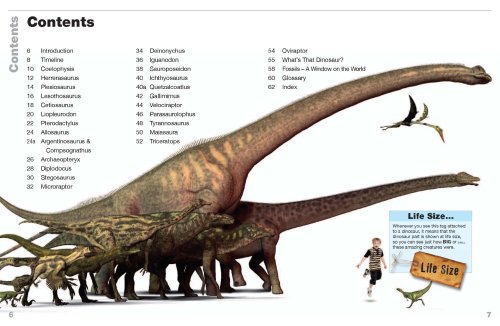
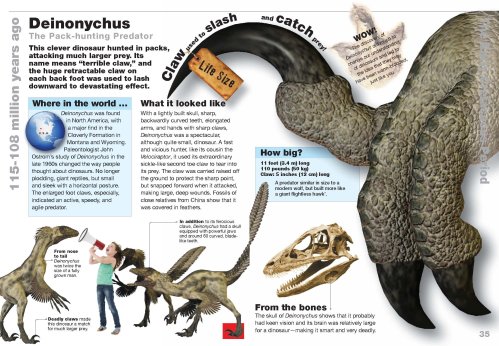
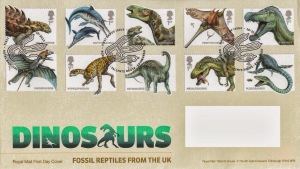
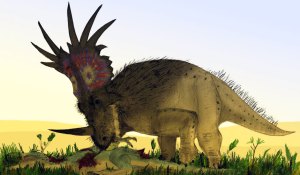


“Not to criticize Bergen’s book as I haven’t read it, but if you were going to choose a book that was a decade old written by a non-expert or a book a few years old written by an expert who also happened to be a professional writer, which would you choose?”
Depends on what I’m looking for. Some of the dino books I collect are for fun/nostalgia. However, when I recommending dino books to others, I tell them to look for those written by/with B.A.D.D. paleontologists 1st & foremost.
BTW, out of curiosity, any plans to review books to avoid, or just those you’d recommend?
“Thus, the best I can do is give it maybe 3/5 stars, which pains me deeply because Darren Naish is a truly smart, well-read, and knowledgeable person who otherwise has written lots of great material.”
Do you usually give the books you review star ratings or is that new? May I suggest including them next to the books listed under “Recommended”?
BTW, good review (as usual). I’m glad you mentioned the paleoart & scaling issues. I haven’t read the book in its entirety though, so I didn’t know about the lack of non-dino clarification.
Thanks! Glad you liked the review.
There will be books from time to time that I recommend avoiding, although I don’t have any in particular in mind right now to review. I have written reviews of websites that I recommended avoiding, such as Reptile Evolution.com. I also take requests like the one you suggested earlier, although those will of course depend on when I can get a copy.
I haven’t usually given starred ratings, that was new. I really wanted to give a good recommendation for the book, based on my past experience with Darren’s work, but I just couldn’t bring myself to do so because of the problems I mentioned in the review. There are good elements to the book, but the book is hindered by what I consider serious flaws. So the star rating commonly used elsewhere was a compromise expressing my ambivalence.
Including them next to the books on the Recommended page is a good idea. I will have to give that serious consideration. I have tended to avoid that sort of rating due to the subjectiveness of that sort of system in favor of the slightly more objective simple description of the pros and cons. But there are certain benefits to the ratings system as well.
“Including them next to the books on the Recommended page is a good idea. I will have to give that serious consideration. I have tended to avoid that sort of rating due to the subjectiveness of that sort of system in favor of the slightly more objective simple description of the pros and cons. But there are certain benefits to the ratings system as well.”
Something I’ve been meaning to do that might help w/that is including a link to a page in which you explain how you rate dino books. I rate them like this: 2* for accurate text; 1* for accurate/good-quality paleoart; 1* for accurate/good-quality writing; 1/2* for being organized; 1/2* for being authoritative. I’ll also add or subtract an extra star & rate it out of 6* if the title makes a superlative claim (E.g. Lessem’s “National Geographic Kids Ultimate Dinopedia: The Most Complete Dinosaur Reference Ever”).
That’s a really good idea. Thanks. I like your breakdown.
Hi – thanks for a fair and mostly positive review of my book. I want to respond to your criticisms. A book like ‘Dinosaurs Life Size’ is created by publishers and designers – not by the author. Furthermore, publishers will tell you that a book that contains dinosaurs just HAS to have the word ‘dinosaurs’ in the title, otherwise it won’t sell. In any case, I tried my best in the text to point out that several of the featured animals are not dinosaurs: look at the Introduction, since this is stated as clearly as it could be.
As goes your complaint about the sizes – I can’t really agree with you. The animals (or bits of them) are posed next to people to give a rough idea of size and, in any case, every single animal is given a ‘length’ and a ‘weight’ in the ‘How big?’ box section. That’s pretty specific. A problem that you didn’t note is that the bits of the animals supposedly shown at ‘life size’ most definitely are not – but that’s a design issue that I’m not taking blame for.
Anyway.. I hope this clarifies things. Thank for writing a neat and generally positive take on the book.
Thanks for commenting! I appreciate you adding your comments to my review. You make an excellent point, one that I should have mentioned, about books like this having many hands in the creation of the final product. It always helps to know just how much control the author actually has over how the book comes out, which, as you stated, is often nowhere near as much as they would like for books like this.
I will claim some possible bias for the review in that I am a fan of your writing, so I may have held your book to a higher standard than I might have for someone with whom I am unfamiliar. I tend to grade people I know more harshly and I have been reading Tetrapod Zoology for a few years now. Of course, your blog is written for a very different audience.
One of the interesting things about writing, or communication in general, is that what one person thinks is clear is impenetrable to another. I commonly have to revise my writing for exactly that reason when I discover what I thought was painfully obvious was missed by most of the readers. I found the mention about the non-dinosaurs in the introduction brief enough that most kids skipped right over it. Because it was not mentioned on the pages describing the animal, it is the rare kid indeed who picked up on that information. I saw it in the introduction because I read every word in the book. Kids the age the book is targeted to almost invariably skimmed the introduction at best, and at worst completely skipped it, paying most attention to what is on the page with the animal. I haven’t yet tried to publish a book, but I’ve watched a lot of kids read them. Of course, virtually all my experience is with American kids, your mileage may vary in the United Kingdom. The US generally does not do an exactly stellar job of teaching kids to read a book thoroughly.
On the sizes, you do list specific sizes in the boxes, so readers paying attention will see that information. The comparisons with the kids are very rough, but likely adequate for the targeted age group. I think what got me was the juxtaposition of a rough visual, which is what the vast majority of readers will remember, with the specificity in the written word. For me, having a scale on the pictures would have successfully bridged the two, but I freely admit that is a personal opinion for me and should not be generalized to others, many of whom will disagree and have no problem at all with the way it is done in the book. I like scale bars though. Kids in the US are not usually taught measurements well, at least in terms of being able to internally visualize them, and they shamefully get next to no training in the metric system until high school, used by practically everyone else on the planet (a point that irritates me to no end). So when it comes to measurements, US kids need all the support they can get. I can’t say how kids in other countries might compare.
Thanks for the response – those are good comments.. but (when it comes to graphics and even stuff like titles and backmatter) you need to remember that you’re talking about the >design< of a book, not the stuff that's the responsibility of an author. As for the non-dinosaurs, I should also say that, given the always-present constraint of wordcount, there honestly wasn't the chance to work in a 'this isn't a dinosaur' disclaimer to each spread, especially when there's already so much to say. Anyway… thanks very much for the kind comments, and thanks again for a nice article on the book.
Very true. Here’s an idea for you. In your copious free time, after you stop hysterically laughing about the very idea of copious free time, write an article describing some of the ins and outs of getting a book published. There is tons of material out there about the writing itself, but I have seen little about the experiences an aspiring writer is likely to face between the writing and the publication. I’m not talking about searching for agents, etc. I’m referring to the steps involved in putting a book together, the design aspects. There are many of us out there with book ideas bouncing around in our head, but most people have no clue what to expect beyond the writing, and what most people “know” is likely wrong. My knowledge of that side can be pretty much summed up as authors have no control over cover art. But I’ve always wondered how much an author can say about the overall design and illustration inside the book and if not, who does make those decisions. There is always self-publication of course, but that is a whole other discussion. Knowing how much say an author has over book design would be enlightening for a lot of people. You have written books for very different audiences, so you have experience not shared by many. Alternatively, if you know of someone who has already done this sort of thing well, let us know. I would be very interested in reading something like that.
“Very true. Here’s an idea for you. In your copious free time, after you stop hysterically laughing about the very idea of copious free time, write an article describing some of the ins and outs of getting a book published.”
That would make a great TetZoo article.
Oh, and — on the artwork… every single project involving CG creatures runs against serious constraints of budget and time. I tried as hard as I could to get our artists to put an appropriate amount of fuzz/feathering on the animals, but it didn’t always work out. It’s hard to appreciate this problem until you do a dinosaur book yourself!
[…] How Big Is Your Favorite Dinosaur? Find Out Here […]